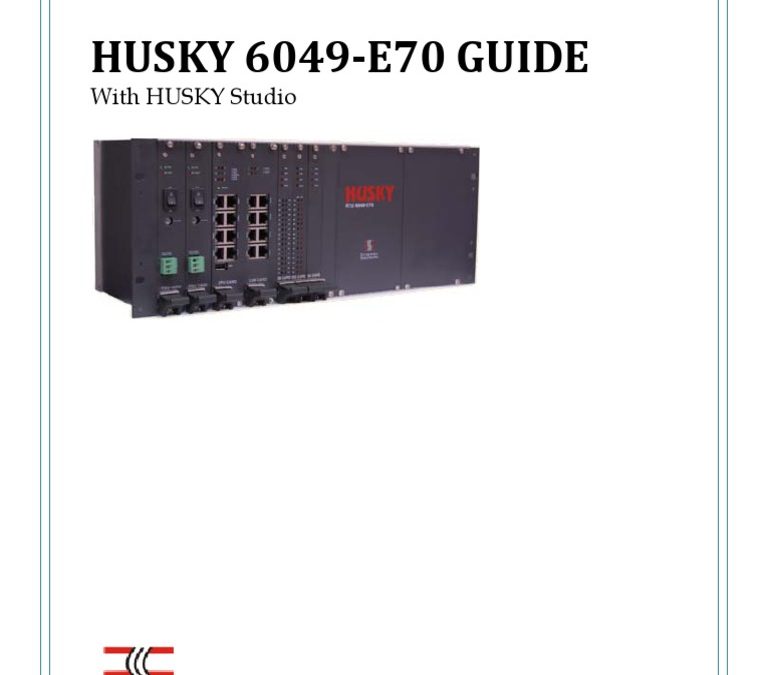1. EXECUTIVE SUMMARY
- CVSS v3 9.8
- ATTENTION: Exploitable remotely/low skill level to exploit
- Vendor: Synergy Systems & Solutions (SSS)
- Equipment: HUSKY RTU
- Vulnerabilities: Improper Authentication, Improper Input Validation
2. RISK EVALUATION
Successful exploitation of these vulnerabilities could allow an attacker to read sensitive information, execute arbitrary code, or cause a denial-of-service condition.
3. TECHNICAL DETAILS
3.1 AFFECTED PRODUCTS
The following versions of HUSKY RTU, a remote terminal unit, are affected:
- HUSKY RTU 6049-E70, with firmware Versions 5.0 and prior
3.2 VULNERABILITY OVERVIEW
3.2.1 IMPROPER AUTHENTICATION CWE-287
The affected product does not require adequate authentication, which may allow an attacker to read sensitive information or execute arbitrary code.
CVE-2019-20046 has been assigned to this vulnerability. A CVSS v3 base score of 9.8 has been calculated; the CVSS vector string is (AV:N/AC:L/PR:N/UI:N/S:U/C:H/I:H/A:H).
3.2.2 IMPROPER INPUT VALIDATION CWE-20
Specially crafted malicious packets could cause disconnection of active authentic connections or reboot of device.
CVE-2019-20045 has been assigned to this vulnerability. A CVSS v3 base score of 7.5 has been calculated; the CVSS vector string is (AV:N/AC:L/PR:N/UI:N/S:U/C:N/I:N/A:H).
3.3 BACKGROUND
- CRITICAL INFRASTRUCTURE SECTORS: Energy, Transportation Systems
- COUNTRIES/AREAS DEPLOYED: Asia
- COMPANY HEADQUARTERS LOCATION: India
3.4 RESEARCHER
The VAPT Team, C3i Center, IITK, UP, India, reported to CISA that they had coordinated these vulnerabilities directly with SSS.
4. MITIGATIONS
SSS makes the following recommendations to mitigate risk.
- Upgrade to firmware Version 5.1.2 or higher. Consult with SSS for possible issues during upgrade, prior to implementing this recommendation.
- Implement network segmentation and firewall policies to reduce exposure of the RTU to uncontrolled and unprotected access.
- Follow recommended security practices and configure firewalls to help protect an industrial control network from attacks that originate from outside the network. Such practices include ensuring that protection, control, and automation systems are physically protected from direct access by unauthorized personnel, have no direct connections to the Internet, are separated from other networks by means of a firewall system that has a minimal number of ports exposed, and other practices to be evaluated case by case.
- Do not allow the use of protection, control, and automation systems for Internet surfing, instant messaging, or receiving e-mails.
- Block all nontrusted IP communications.
- Configure trusted IP address access (IP whitelisting) in the RTU configuration for IEC-104 protocol to restrict hosts that can access the RTU.
- Implement passwords in the RTU to restrict access to the RTU, via Husky Studio.
- If possible, set up an SSL tunnel between the RTU and control center to restrict access to the RTU.
CISA reminds organizations to perform proper impact analysis and risk assessment prior to deploying defensive measures.
CISA also provides a section for control systems security recommended practices on the ICS webpage on us-cert.gov. Several recommended practices are available for reading and download, including Improving Industrial Control Systems Cybersecurity with Defense-in-Depth Strategies.
Additional mitigation guidance and recommended practices are publicly available on the ICS webpage on us-cert.gov in the Technical Information Paper, ICS-TIP-12-146-01B–Targeted Cyber Intrusion Detection and Mitigation Strategies.
Organizations observing any suspected malicious activity should follow their established internal procedures and report their findings to CISA for tracking and correlation against other incidents.
No known public exploits specifically target these vulnerabilities.
Source:


Stay connected